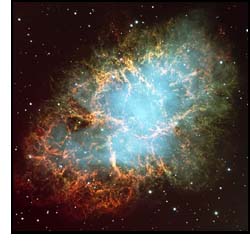
There are several ways to think of light. The classical description says light is an electro-magnetic wave. This means that it is a varying electric and magnetic field, which spreads out or propagates from one place to another. It is not a physical substance.
The modern quantum mechanical description says that light can also be considered to be particles called photons. These carry energy and momentum but have no mass. In both descriptions, the light energy is carried by a very real and observable mechanism, which is not a physical object.
A more inclusive definition includes any radiation, which shares with visible light many of the properties such as reflection, refraction, polarization, diffraction and velocity, e.g., ultra-violet and infra-red "light" which are of course invisible to humans though bees and butterflies have well developed ultra-violet vision. The term electromagnetic radiation refers to all the types of radiation that resemble light and can be characterized by frequency and wavelength and these are, in order of increasing wavelength, cosmic rays, g-rays, X-rays, ultra-violet light, visible light, infra-red radiation, microwaves, and radio waves.